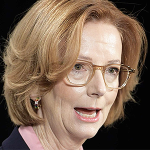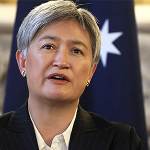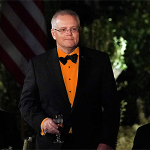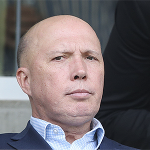Australia is like a cyclist who has stopped peddling. We have been travelling for some time ,not under our own steam, but with the momentum of the past and the good fortunes of the road we’re on.
A range of economic data provides evidence that this is the case.
Australia’s economy, measured on a per-person basis, has been shrinking for the past two years. This is the longest-running decline in our living standards since the second world war.
Our productivity growth has also been going backwards. Economic output per hour worked has been in decline for several years and is currently at the same level that it was in late 2016. This means that we are not working smarter or harder, just that we are working longer hours to get the same things done.
Remember that higher levels of productivity are the only way that real wages can increase, and becoming more productive will help to reduce the cost of living.
Since May 2022, close to 28,000 companies have become insolvent in what could be considered a bankruptcy crisis. Between 1999 and 2019, an average of 670 companies became insolvent per month. In 2024, the monthly average was 1,120.
Speaking of companies, as of January 2025 there were 1,985 of them listed on the ASX. This is down from 2,157 as recently as July 2022. It might seem like a relatively small decline, but having fewer publicly listed companies indicates an economy in decline.
Only 36 per cent of 25-29-year-olds were homeowners in 2021. In 1976, 54 per cent of the same age group had bought a home.
Total federal government debt, which is costing billions in interest repayments and which will require higher taxes to repay, is currently close to $1 trillion (some 36 per cent of GDP). Australia hasn’t had such high debt levels since the wake of the second world war. State debts of a further $360 billion must also be repaid at some stage.
In the year 2000, electricity spot prices in New South Wales (to take one example) averaged $35.66/MWh. In 2024 they averaged $129.52.
Taken together, these data points paint a grim picture for Australians. Our living standards are in decline, our economy has become stagnant, it’s harder to buy a home, we are in a great deal of debt, and our electricity has become far too expensive.
The positive news is Australia has faced similar challenges in the past and we have overcome them.
Part of the explanation for why we have ended up where we are is because our political leaders have undone the hard work of their predecessors.
In the 1970s, the Australian economy was similarly stagnant. Our government was too large and too intrusive, propping up industries and companies with protectionism that cost ordinary Australians dearly. They were heavy-handed in the regulation of everything from wages to the price of wool.
A group of backbenchers in the Federal Parliament who came to be known as the ‘dries’ provided the intellectual leadership that eventually saw the Labor and then Liberal-National coalition parties change their ways.
The dries, according to their Labor contemporary and minister in the Hawke government, Peter Walsh, ‘…were driven by the twin beliefs that an open economy would enhance economic output, efficiency and, equally important, that a corporate state which rewards rent-seekers and bludgers is socially and morally pernicious.’
They did the intellectual work and advocacy that set the foundation for the liberalising reforms of the 1980s and 1990s, when political instincts moved away from control and toward freedom. By removing their stranglehold on the economy – across labour markets, international trade, the financial system, and special favours for business – both the Labor and Liberal-National coalition parties unlocked an extraordinary period of economic growth and resilience.
More recently, however, our politicians have returned to their old ways. The instinct for control has returned, and both sides of politics have claimed that they are best placed to direct the fates of industries and individuals.
This instinct is buried deep in the Australian political psyche going back to the decades before Federation. However, our history shows that Australians will be better off, with higher standards of living and more freedom and opportunity, if we pursue the path that the dries set out.
From time to time, we have to remind ourselves of the lessons of history.
The Mannkal Economic Education Foundation has done a significant amount of work to help, including by digitising and making available the John Hyde archives. John Hyde was a member of the Federal Parliament between 1974 and 1983. He was one of the core members of the dries, alongside most notably his colleagues Peter Shack and Jim Carlton. Together they were the organisational and intellectual leaders who set out an alternative path for Australia based on freedom, progress, and prosperity.
Australia needs to start peddling again. We won’t get back up to full speed straight away. We may face sharp corners and steep hills that will slow us down. It will take time. But future generations, our children and grandchildren, will thank us for our efforts if we do.
Remembering the dries is a worthy first step in understanding how we can get started.
Cian Hussey is Mannkal’s John Hyde Visiting Fellow.








